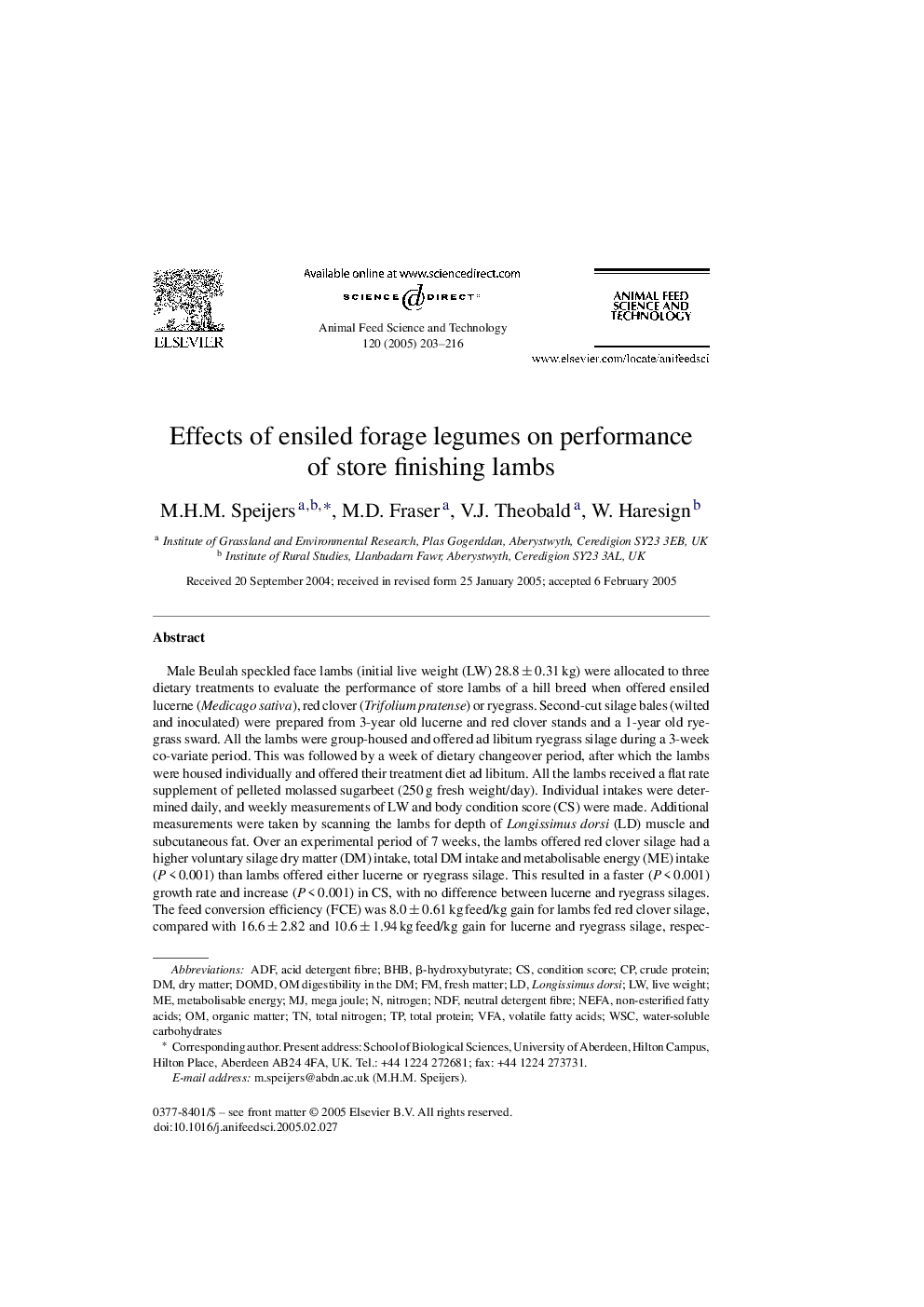| Article ID | Journal | Published Year | Pages | File Type |
|---|---|---|---|---|
| 8973715 | Animal Feed Science and Technology | 2005 | 14 Pages |
Abstract
Male Beulah speckled face lambs (initial live weight (LW) 28.8 ± 0.31 kg) were allocated to three dietary treatments to evaluate the performance of store lambs of a hill breed when offered ensiled lucerne (Medicago sativa), red clover (Trifolium pratense) or ryegrass. Second-cut silage bales (wilted and inoculated) were prepared from 3-year old lucerne and red clover stands and a 1-year old ryegrass sward. All the lambs were group-housed and offered ad libitum ryegrass silage during a 3-week co-variate period. This was followed by a week of dietary changeover period, after which the lambs were housed individually and offered their treatment diet ad libitum. All the lambs received a flat rate supplement of pelleted molassed sugarbeet (250 g fresh weight/day). Individual intakes were determined daily, and weekly measurements of LW and body condition score (CS) were made. Additional measurements were taken by scanning the lambs for depth of Longissimus dorsi (LD) muscle and subcutaneous fat. Over an experimental period of 7 weeks, the lambs offered red clover silage had a higher voluntary silage dry matter (DM) intake, total DM intake and metabolisable energy (ME) intake (P < 0.001) than lambs offered either lucerne or ryegrass silage. This resulted in a faster (P < 0.001) growth rate and increase (P < 0.001) in CS, with no difference between lucerne and ryegrass silages. The feed conversion efficiency (FCE) was 8.0 ± 0.61 kg feed/kg gain for lambs fed red clover silage, compared with 16.6 ± 2.82 and 10.6 ± 1.94 kg feed/kg gain for lucerne and ryegrass silage, respectively. The CP intake was higher (P < 0.001) for lambs fed the lucerne and red clover silages than for the ryegrass silage treatment. The concentration of plasma total protein (TP) was higher (P < 0.05) for lambs offered ryegrass silage versus lucerne and red clover silage. Urea concentrations were highest for lambs fed lucerne silage and lowest for those fed ryegrass silage (P < 0.05). The glucose concentration was higher (P < 0.05) for lambs offered red clover silage, whereas non-esterified fatty acids (NEFA) concentration was higher (P < 0.05) for lambs offered lucerne silage. Substituting ryegrass silage with red clover silage has the potential to improve the performance of finishing store lambs.
Keywords
ADFDOMDNDFVFAlongissimus dorsiNEFABHBβ-hydroxybutyrateWSCnon-esterified fatty acidsVolatile fatty acidsacid detergent fibremetabolisable energyRed cloverGrowth performanceneutral detergent fibreLucerneorganic matterfresh matterdry matterMega jouleCondition scoreNitrogentotal nitrogenLive weightcrude proteinWater-soluble carbohydratestotal protein
Related Topics
Life Sciences
Agricultural and Biological Sciences
Animal Science and Zoology
Authors
M.H.M. Speijers, M.D. Fraser, V.J. Theobald, W. Haresign,
